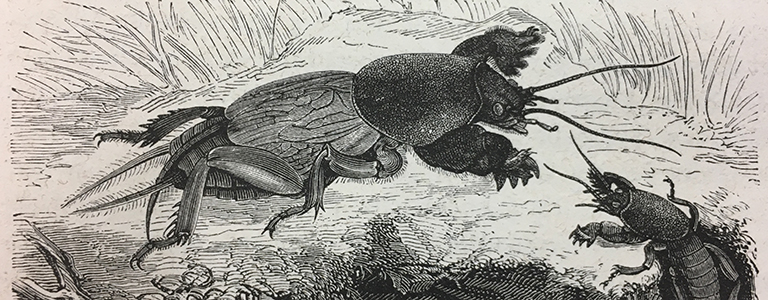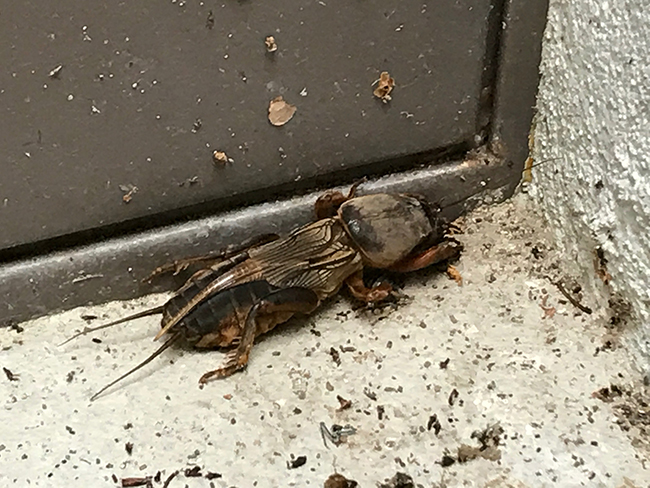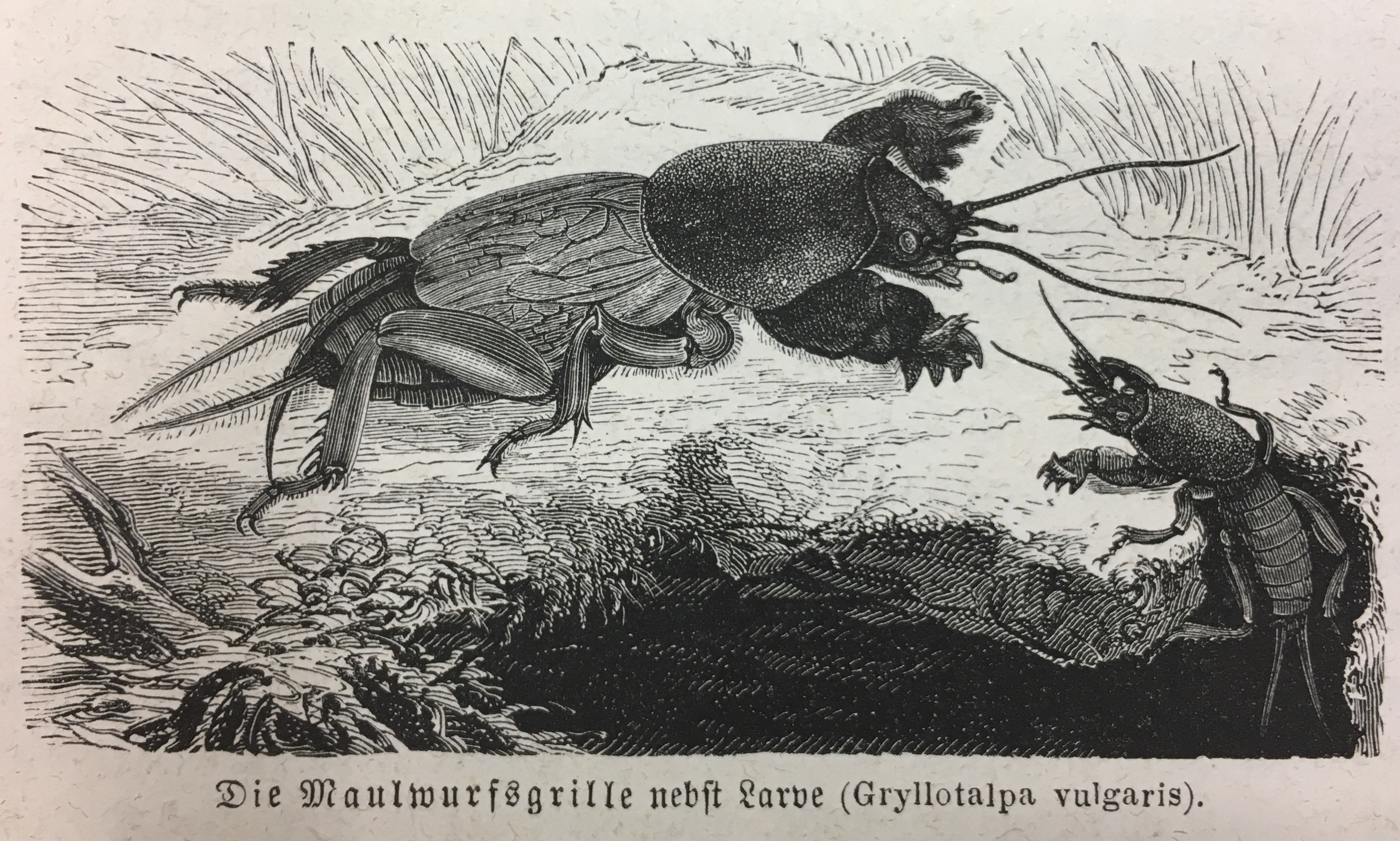Entomological research collections are often contact points for all manner of questions. In many cases an answer is close at hand, but sometimes extensive literature research, exchange with specialists and queries on internet forums are necessary. This summer, ETH Entomological Collection was sent a photo with the following commentary: “I would like to ask you if you have any ideas about this bizarre living creature which my daughter found in our garage”.
An anonymous intruder in a Zurich garage (Entomological Collection ETH Zurich)
Finding the answer was simple. Entomologically, however, the enquiry in itself was quite telling, as it revealed a lot about the presence – or rather absence – of this insect in our landscape. Formerly, this species was abundant, but as Alfred Edmund Brehm wrote in his Illustrirtes Thierleben in 1869 “wherever it settles down, it is feared and rightly so”. Brehm mentioned a number of names under which the insect was known: Reutwurm, Reitkröte, Erdwolf, Moldworf, Erdkrebs, Maulwurfsgrille or Werre. The names say it all: Werre originates from the old German word verwerren = to devastate, reuten or reiten derive from riuten = to root out, and the word mold was formerly used to designate thrown soil.
The mole cricket Gryllotalpa gryllotalpa Linnaeus 1758 from A.E. Brehm, Illustrirtes Thierleben 1869 (ETH-Library, Rar 30518: 6)
Mole crickets constitute a family of their own, the Gryllotalpidae, and have populated all continents except Antarctica. In Switzerland, only the European mole cricket Gryllotalpa gryllotalpa is found. In the earth, the animals create extensive tunnel systems and hunt underground insects and their larvae. They also like to gnaw at the roots of different plants, especially if they stand in the way of their tunnel construction. By doing so, they did not make friends among gardeners and farmers who put an end to the annoying rummaging with chlordane and other contact insecticides. The potent poison has since disappeared from agriculture, but so have the mole crickets. In many countries, they are now on the red list and classified as highly endangered.
Three-dimensional model of a mole cricket, please click on the image to navigate (Daniel Boschung, Art and Face Cartographer, Zurich; www.robophot.com)
Fortunate finders of a mole cricket are usually irritated or fascinated, as was the Zurich-based photographer Daniel Boschung, who turned into a mole cricket enthusiast. He is known for his portraits which he creates by using a camera mounted on an industrial robot. For the Entomological Collection of ETH Zurich, he placed a specimen from his garden into his apparatus and generated a three-dimensional image in a process known as photogrammetry. Eight million reference points were calculated from 5,000 photos and put together to form a model that can be rotated, enlarged and viewed from all angles. Quite a great deal of attention for a formerly outcast pest, you could say.
Mole crickets are indeed intriguing creatures and deserve our interest. Currently, researchers are investigating the defensive secretions of the mole cricket for medical use – getting initial positive results in wound healing. Mole crickets can fly, swim and communicate with stridulating chants and warning sounds. Vita brevis, entomologia longa…
In our reply to the enquirer we included some anecdotal information about her visitor from the garage. The next day she commented: “Funnily enough it looked quite disgusting yesterday without knowing what it was but now I find it cute. Another funny thing is that it often appears in old Japanese children’s songs but I had never seen it before.”
Further reading
Brehm A. E. (1869): Illustrirtes Thierleben. 6. Band. Verlag des Bibliographischen Instituts, Hildburghausen.
Zimmer M. M., Frank J., Barker J. H. & Becker H. (2006) Effect of extracts from the Chinese and European mole cricket on wound epithelialization and neovascularization: in vivo studies in the hairless mouse ear wound model. Wound Repair and Regeneration 14: 142–151.


